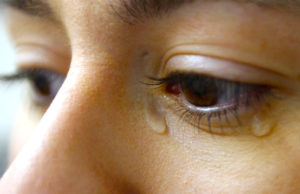— On a blustery spring day five years ago, Yakov Lapitzy pointed a
video camera at his friend Jawed Karim standing in front of two
elephants at the
The resulting 19-second clip, titled “Me at the
zoo,” was not a cinematic masterpiece, with Karim remarking on the
pachyderm’s “really, really long trunks.”
But as the first video uploaded to YouTube, it
played a pivotal role in fundamentally altering how people consumed
media and helped usher in a golden era of the 60-second video.
“Prior to YouTube, there was no way people would watch anything that was 30 or 60 seconds,” said
Five years after Karim’s 19 seconds of digital
immortality hit the Web and rocked the world of television, YouTube is
coming full circle. The king of Internet video is embarking on a
mission to become nothing less than the world’s TV.
The average YouTube viewer sticks around for about 15 minutes a day, while TV ensnares people for five hours daily. So the
To close the gap with television, YouTube is adding
full-length movies, two-hour concerts and live sporting events — some
in high-definition and even stereoscopic 3-D — to its mix of
snack-sized videos. It’s putting an emphasis on more polished videos
from independent movie producers, major record labels and even
As much as YouTube went out of its way in the
beginning to be the antithesis of television, in the end, it may become
more like the boob tube.
“The day is coming when people won’t think of online video as being separate from TV,” said
who runs YouTube’s advertising programs as director of product
management. “The lines are blurring in both directions. From the
viewer’s perspective, there are many ways to watch content on their TV,
and TV content on the Internet.”
That was not the idea in 2005 when YouTube founders
By
that 65,000 videos a day were being uploaded to its site. It wasn’t
long before YouTube got noticed by a few big corporate fish. One was
YouTube also caught the eye of Viacom Inc. The media behemoth sued YouTube and its new corporate parent in
alleging that YouTube had violated its copyrights when its users
uploaded pirated videos of Viacom’s TV shows, including episodes of
“South Park.” Google claimed that Viacom employees had uploaded many of
those clips to market their shows to millions of YouTube users.
The case, which continues to wend its way through federal courts, in many ways encapsulates
— even as both increasingly rely on the other to capture a generation
of viewers who are as likely to reach for their computer mouse as they
would their TV remote in search of something to watch.
“The relationship isn’t completely repaired as long as the Viacom lawsuit is unresolved, but they’ve come a long way,” said
Part of YouTube’s power is that it has become the
first place many Web surfers turn to find video, making it the second
most popular search engine after its parent,
YouTube now streams 2 billion video views a day, more than the number
of videos served up by three major broadcasters combined.
Whether YouTube has parlayed those eyeballs into profit is another matter.
has declined to break out YouTube’s financial performance from its
overall earnings and has not said whether its subsidiary is profitable.
To improve its margins, YouTube is cultivating more
professionally produced videos, which tend to keep people around longer
than homemade cat videos, Richmond said.
“YouTube has recognized that a large portion of
user-generated content is not monetizable,” Richmond said, “so they’ve
made a huge effort to make more premium content available.”
A prime example is “Striker,” a Bollywood thriller
that debuted on YouTube in January on the same day it was released in
theaters. Its producers had the film blocked in
on YouTube in the U.S., and let the rest of the world watch it for
free, supported by advertising. YouTube served up more than 954,300
views of the movie but declined to say how many were paid rentals.
YouTube hasn’t landed any
blockbusters. But the company, which announced its video-rental program
at January’s Sundance Festival, acknowledged that its platform is more
appropriate for independent filmmakers struggling to get distribution
from traditional media channels.
That was exactly what Academy Award winner
“I didn’t want to wait for the networks to warm up
to the idea of whether the show would be a hit or not with audiences,”
Matlin said. “So I decided to put it out there on my own terms. YouTube
is akin to having my own (TV) network.”
YouTube hasn’t abandoned short-form amateur video.
Its users upload 24 hours of video every minute, much of which falls
into the “cat on a skateboard” variety. One of those was a clip
appointment. Groggy from the anesthesia, his son asks, “Is this real
life?” Uploaded to YouTube on
Thanks in part to a program in which YouTube shares
its advertising revenue with creators of the site’s more popular
videos, DeVore, who lives in
“However short or long it lasts, it’s opened up experiences that we would never otherwise have,” DeVore said.
Compelling as it may be, “David After Dentist” can
keep a viewer’s attention for only the two minutes it takes to watch
the clip. On average, visitors will watch a handful of other videos,
then click off to another site.
YouTube is working on ways to make the site more of
a “lean-back” experience. It’s working on better ways to suggest
similar videos that would entice a viewer to linger.
One experiment, which YouTube calls “Disco,” tries
to match a person’s taste with video recommendations. Amazon uses a
similar method to suggest items to its shoppers, based on items they’ve
already purchased.
“We want to make it easy for you to cut through this gigantic set of videos and find exactly what you want to watch,” said
But thanks to the revolution that YouTube kicked off
five years ago, what viewers want to watch is a lot more diverse than
it was, said
“YouTube has become a lot of things at once,”
Jenkins said. “It’s become the first place people turn to for both
amateur and professional media, the central portal for all media.”
———
(c) 2010,
Visit the
Distributed by McClatchy-Tribune Information Services.














